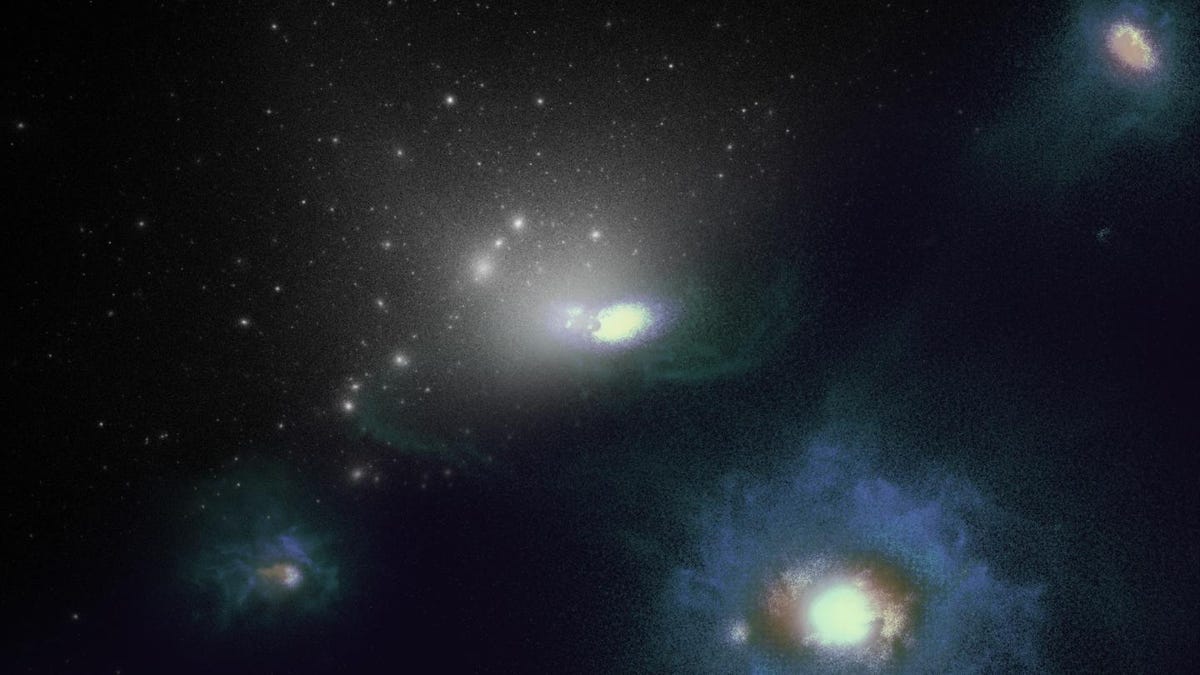Milky Way suspected of kidnapping neighbor's tiny galaxies
Astronomers investigating dark matter warn that more dwarf-snatching is likely.

Visualization of the simulations used in the study. Top left shows dark matter in white. Bottom right shows a simulated Large Magellanic Cloud-like galaxy with stars and gas, and several smaller companion galaxies.
The massive Milky Way galaxy has used its powerful gravitational field to tear apart the neighboring Large Megellanic Cloud (LMC) and kidnap six of its tiny, or "dwarf," galaxies, astronomers said in a new paper. The theft is part of an ongoing merger of the Milky Way and the LMC, the scientists found. The discovery is thought to be an important confirmation of current cosmological models, and of the number and position of smaller satellite galaxies.
"The LMC hosted at least seven satellite galaxies of its own, including the Small Magellanic Cloud in the Southern Sky, prior to them being captured by the Milky Way," lead study author Ethan Jahn said in a release Thursday.
The team of astronomers partnered with scientists from the University of California, Riverside, to investigate the dwarf-snatching, following new data revealed by the Gaia space telescope. Using computer simulations to predict the positions and velocities of materials such as dark matter, the researchers were able to map the structural formation of ultrafaint dwarf galaxies for what they say is the first time.
The team's computer simulations also revealed the extent to which the LMC and similar galaxies contain no stars at all, leading Jahn toward a striking possibility.
"The high number of tiny dwarf galaxies seems to suggest the dark matter content of the LMC is quite large, meaning the Milky Way is undergoing the most massive merger in its history," he said in the release.
The team's full findings are slated to appear in the November 2019 issue of the Monthly Notices of the Royal Astronomical Society.

